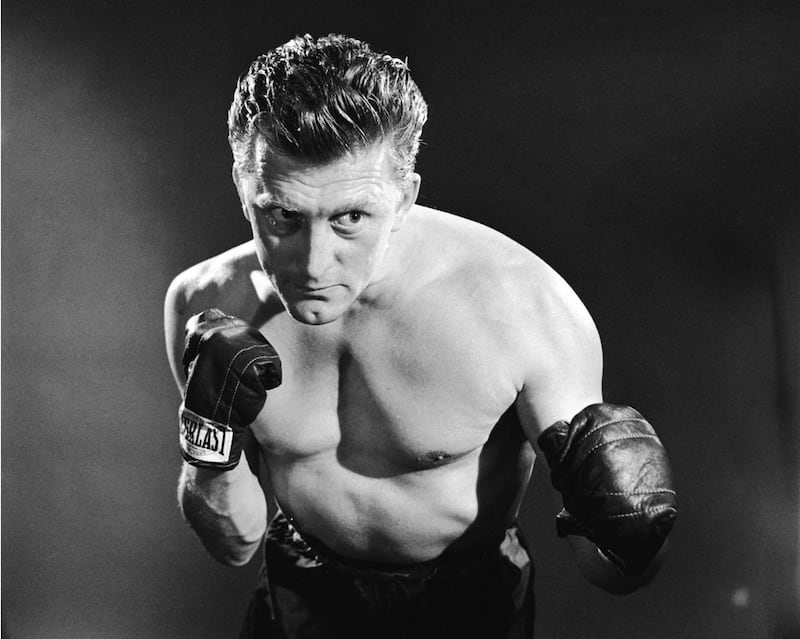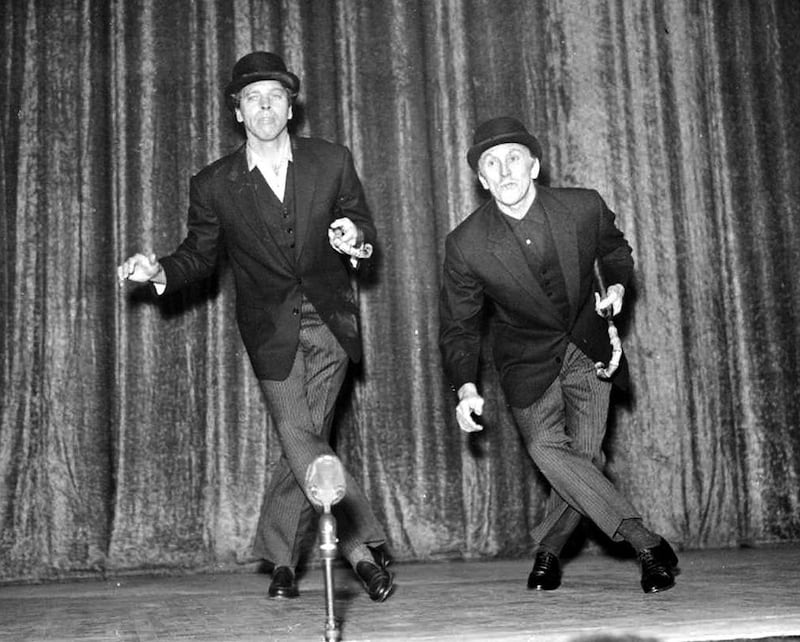The phrase “end of an era” does not do justice to the passing of Kirk Douglas at 103.
A star for three quarters of a century, he first registered opposite Barbara Stanwyck in The Strange Love of Martha Ivers in 1946 and went on to establish a reputation as a rugged, charismatic actor who – like his contemporary Burt Lancaster – brought a hint of dangerous athleticism to everything he did.
He starred opposite Doris Day as a variation on trumpeter Bix Beiderbecke in Young Man With a Horn (1950) and received an Oscar nomination as a cynical movie producer in The Bad and the Beautiful (1952).

Later roles of note included searing turns for Stanley Kubrick in Paths of Glory (1957) and Spartacus (1960). He stood up against the McCarthyite tyranny to get that last film made – written by blacklisted author Dalton Trumbo - and continued to support liberal causes throughout his enormously long life.
'Life is like a B-picture script,' Kirk once said. His extraordinary survival over so many years certainly satisfies that description
Michael Douglas, the best known of his four sons, made the announcement on Wednesday evening. “It is with tremendous sadness that my brothers and I announce that Kirk Douglas left us today at the age of 103,” he said.
“To the world, he was a legend, an actor from the golden age of movies who lived well into his golden years, a humanitarian whose commitment to justice and the causes he believed in set a standard for all of us to aspire to.”
Douglas was born into humble circumstances as Issur Danielovitch in Amsterdam, New York. The Ragman’s Son, his memorably titled 1988 autobiography, talked readers through the great hardships of an interwar childhood.
He sold sandwiches to mill workers and delivered newspapers as he dreamt of making his way in the theatre. He eventually secured a scholarship at the American Academy of Dramatic Arts in New York City – Lauren Bacall was a classmate – but his career was, like so many of his generation, interrupted by the second World War. He served as a communications officer in the US Navy and was medically discharged in 1944 after suffering injuries from a depth charge.
He managed to secure work on radio shows and commercials after the war. Bacall recommended him to Paramount who, seeing something remarkable in his angular face with its famous dimpled chin, found space for him in The Strange Love of Martha Ivers.

Famously awkward
Douglas occupied an unusual place among the stars of the era.
A famously awkward (some would say cantankerous) individual, he attacked his roles with great intensity, but he didn’t have the mysterious otherness of method actors such as Montgomery Clift or Marlon Brando.
Douglas ripped up the screen as Vincent Van Gogh in the focused Lust for Life, but he was equally at home brandishing a sword in adventures such as Spartacus or The Vikings (1958).
“The biggest lie is the lie we tell ourselves in the distorted visions we have of ourselves, blocking out some sections, enhancing others,” he said. “What remains are not the cold facts of life, but how we perceive them. That’s really who we are.”
In the 1960s, he had a great success in the stage version of One Flew Over the Cuckoo’s Nest and worked hard to get the play onto film. Sadly, by the time it came together in 1975, he was too old for the part.
Jack Nicholson won an Oscar as the rebellious lead. Michael Douglas grabbed his first Oscar as producer of the film. Kirk never won an Academy Award. “He is completely inspirational,” Michael later said.
Kirk Douglas worked rarely after suffering a severe stroke in 1996. But he remained a vital part of his clan for over two decades.
“Life is like a B-picture script,” he once said. His extraordinary survival over so many years certainly satisfies that description.
Douglas was not quite the last star from Hollywood’s golden age. Olivia De Havilland, born around six months earlier, is still aloft and alert. But a curtain has come down on one of the great Hollywood careers.
The tribute at the Oscars on Sunday night will be something to behold. He is survived by Anne Buydens, whom he married in 1954, and by three of his four sons.















